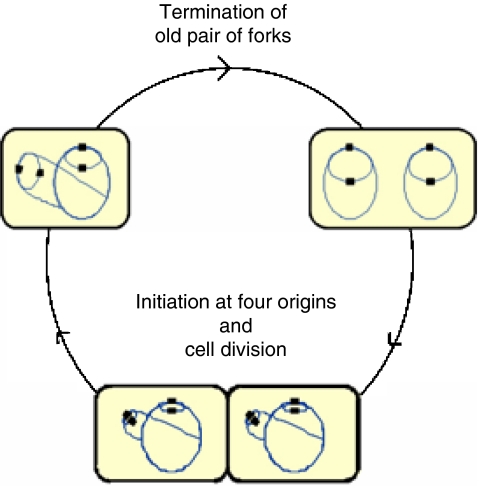Figure 1.
Replication pattern of rapidly growing E. coli wild-type cells. Cells (yellow) with chromosomes (blue lines) and origins (black squares) are drawn schematically to show the number of replication forks and origins at different stages of the cell cycle. In this example, initiation of replication occurs at four origins at the same time as cell division (bottom). A young cell therefore contains four origins and six replication forks (upper left). As replication proceeds, the oldest pair of forks reach the terminus and the two sister chromosomes segregate. The cell then contains four origins and four replication forks (upper right). Initiation then occurs again at 4 origins and generates 8 new forks giving a total of 12 forks, as cell division approaches (bottom). Because there will be cell-to-cell variability, some cells will contain eight origins before they divide, whereas cells that divide before initiation of replication will contain only two origins (not shown). However, the majority of the cells in the culture will contain four origins.

